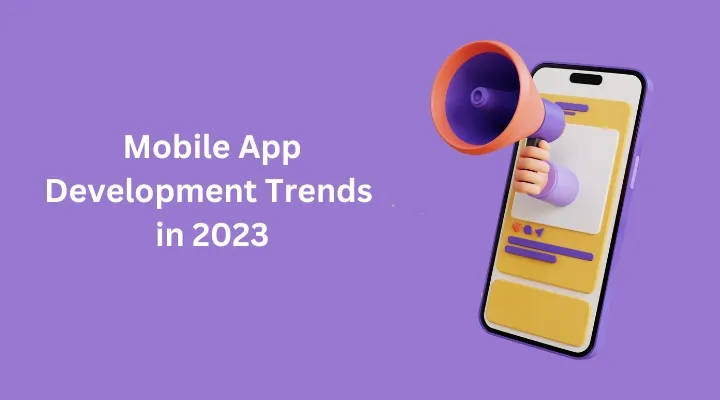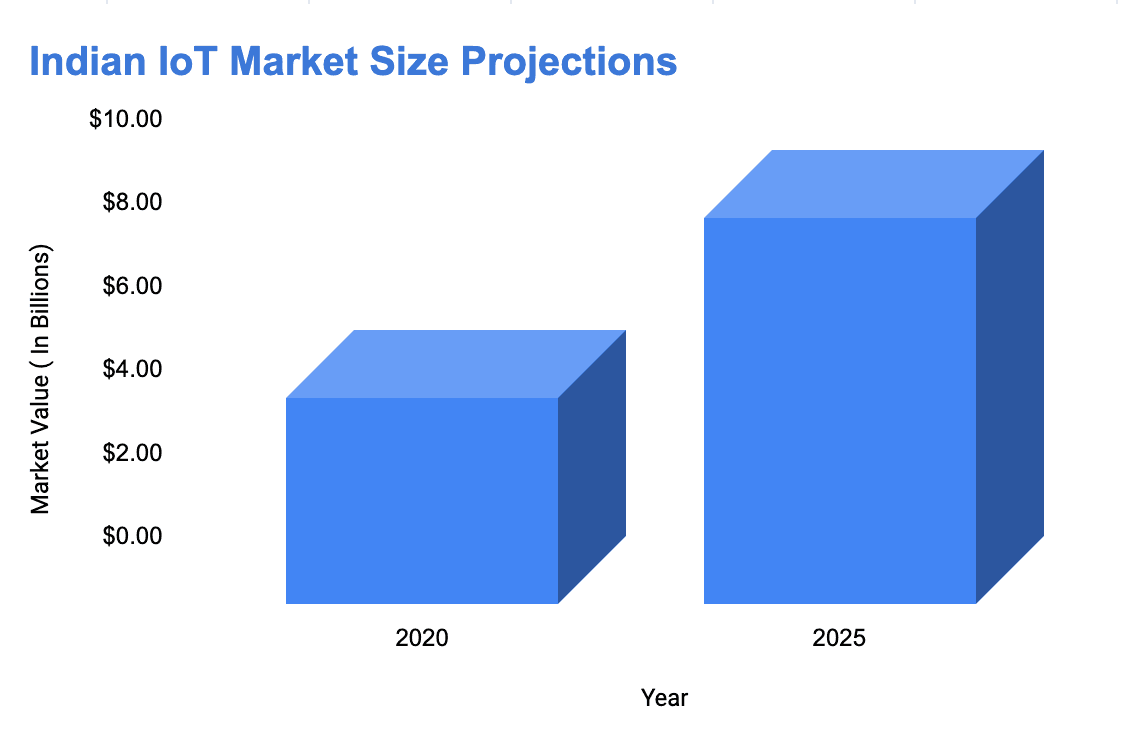10 Mobile App Development Trends To Follow in 2023

In the fast-paced world of technology, staying ahead of the curve is imperative. This year the mobile app development landscape is experiencing significant shifts, driven by advancements in technology, changing user behaviors, and evolving market demands. From the seamless integration of IoT to the transformative power of AI, here are the top 15 mobile app development trends that are poised to dominate this year.
1. IoT Integration
The Internet of Things (IoT) continues its integration into our daily lives, and mobile apps are at the forefront of this transformation. Numbers speak volumes about the rise of IoT. The Indian Internet of Things (IoT) market is projected to reach $9.28 billion by 2025 from $4.98 billion in 2020 according to Frost & Sullivan. IoT-enabled apps are connecting various devices and creating a seamless ecosystem. Imagine controlling your home's lighting, security, and appliances from a single app. IoT not only enhances convenience but also paves the way for innovative solutions in healthcare, smart cities, and more.

2. AI-Powered Personalization
Artificial Intelligence (AI) is no longer a buzzword; it's a fundamental driving force behind mobile app innovation. AI-powered apps analyze user behavior, preferences, and interactions to provide personalized recommendations and experiences. Whether it's suggesting products, curating content, or predicting user actions, AI-enhanced personalization is elevating user engagement and satisfaction. Using AI algorithms, Swiggy analyzes user preferences, order history, and location data to curate personalized recommendations for each user. This not only increases user engagement but also drives higher order values.
3. Augmented Reality (AR) Immersion
AR is pushing the boundaries of how we interact with our environment. Mobile apps are leveraging AR to provide immersive experiences, blurring the lines between the physical and digital worlds. From trying on virtual clothes to visualizing furniture in your living room before purchase, AR is revolutionizing user engagement and decision-making.
4. Cloud-Native Apps
Cloud-native apps are becoming a norm, offering seamless access to data and services across devices. These apps eliminate the need for extensive device storage and enable users to switch devices without losing data or progress. Cloud integration ensures a consistent experience, making apps more accessible and user-friendly. By migrating their services to cloud-native architecture, OYO has transformed their mobile app into a powerful platform that offers real-time booking, personalized recommendations, and seamless check-in experiences.
5. Blockchain Implementation
Blockchain's influence extends beyond cryptocurrencies. Apps are integrating blockchain technology to enhance security, privacy, and transparency. Whether it's secure transactions, data protection, or identity verification, blockchain ensures a trustworthy and secure app environment for users. One standout example of blockchain implementation in the Indian context is KhataBook, a digital ledger app for small businesses. The app uses blockchain to ensure the security and immutability of financial records, enhancing trust between business owners and their clients.
6. Progressive Web Apps (PWAs)
Progressive Web Apps (PWAs) are gaining traction, bridging the gap between websites and mobile apps. These web applications offer app-like experiences directly through web browsers, eliminating the need for app downloads. PWAs are particularly beneficial in regions with limited storage space and slower internet speeds. According to recent research, companies that adopted PWAs experienced a remarkable 68% increase in mobile traffic and a 52% higher conversion rate compared to traditional mobile apps.
7. Voice-Enabled Apps
Voice technology is reshaping user interactions with apps. Voice-enabled apps are gaining sophistication, offering hands-free control, virtual assistants, and enhanced accessibility. These apps cater to users' on-the-go lifestyles and offer a more inclusive experience for those with disabilities.
8. App Security
As apps become integral to our lives, ensuring user data security is paramount. According to a recent survey conducted by a leading cybersecurity firm, over 70% of mobile app users in India are concerned about the security of their personal data stored within apps. Mobile app developers are placing a strong emphasis on robust security measures, including biometric authentication, data encryption, and secure APIs. This commitment to security enhances user trust and fosters long-term relationships.
9. Hyper-Personalization
Hyper-personalization is more than just addressing users by their names. Apps are utilizing data-driven insights to provide customized content, recommendations, and experiences. Users now expect apps to anticipate their needs and provide tailor-made solutions. In the banking sector, hyper-personalization is reshaping the way customers engage with their finances. Consider the case of an Indian fintech startup, "MoneyMatters" which launched a mobile banking app designed to cater to individual financial preferences.
10. Gamification
Gamification techniques are infusing apps with fun and engagement. By incorporating elements like rewards, challenges, and interactive features, apps are encouraging users to stay engaged and committed. Gamification fosters a sense of achievement and satisfaction among users. According to studies, apps with gamified elements experience 10% higher user retention rates compared to non-gamified apps.
Frequently Asked Questions (FAQs)
Q1: How can businesses benefit from AI-powered personalization in mobile apps?
AI-powered personalization analyzes user behavior to provide tailored recommendations, enhancing user engagement and satisfaction. Businesses can boost conversions and customer loyalty through customized experiences.
Q2: What are Progressive Web Apps (PWAs), and how do they differ from native mobile apps?
PWAs are web applications that offer app-like experiences through web browsers, eliminating the need for app downloads. They provide faster loading times and better accessibility, especially in regions with slow internet speeds.
Q3: How can gamification enhance user engagement in mobile apps?
Gamification involves incorporating game-like elements into apps, such as rewards and challenges. This technique fosters user engagement, motivation, and a sense of accomplishment, leading to increased app usage.
Q4: What impact does 5G integration have on mobile app experiences?
5G integration enhances app experiences with faster speeds and reduced latency. This enables high-quality streaming, augmented reality features, and quicker downloads, catering to users' demand for instant and immersive content.
Q5: How is blockchain integration impacting mobile app development?
Blockchain technology is revolutionizing mobile apps by introducing transparency, security, and decentralized control. By integrating blockchain, apps can provide secure and tamper-proof transactions. For instance, Indian agriculture app Agri10x employs blockchain to ensure the authenticity of agricultural products' origin, building trust among consumers. Supply chain apps use blockchain to track the journey of products, enhancing transparency and reducing fraud.